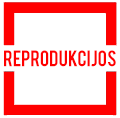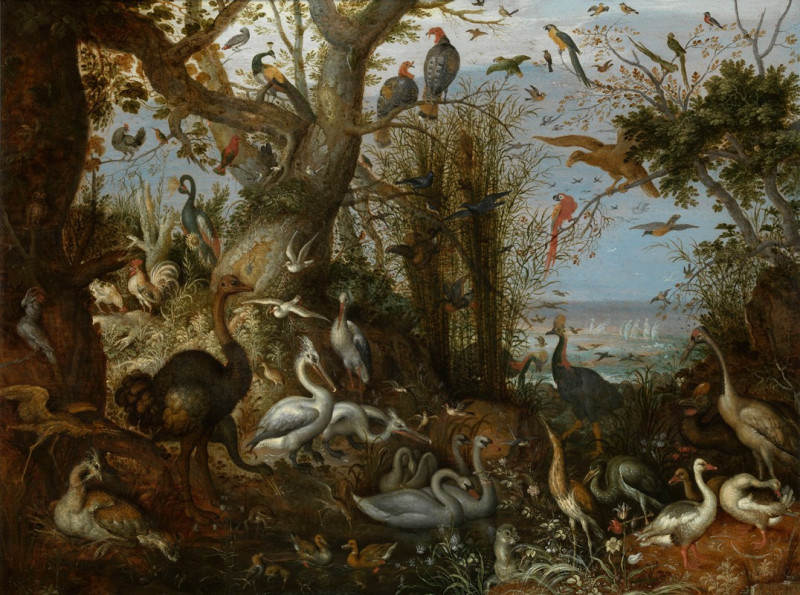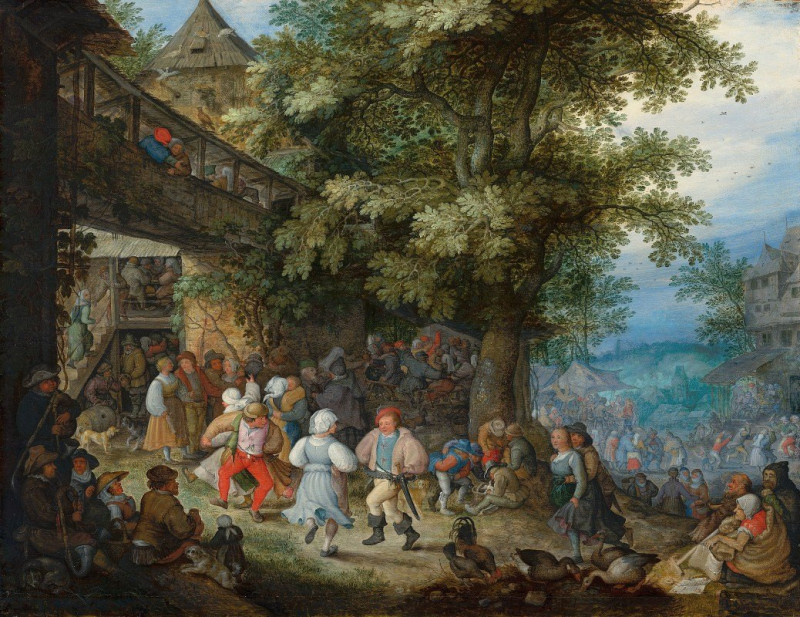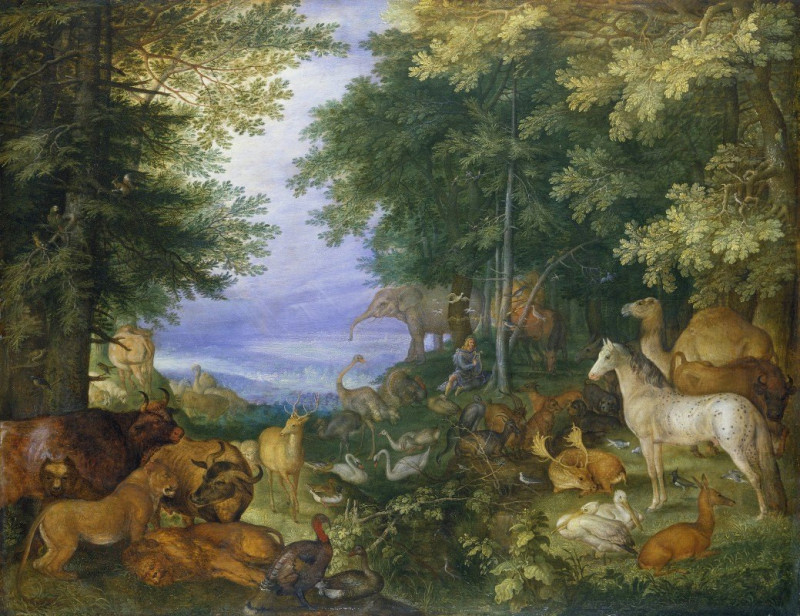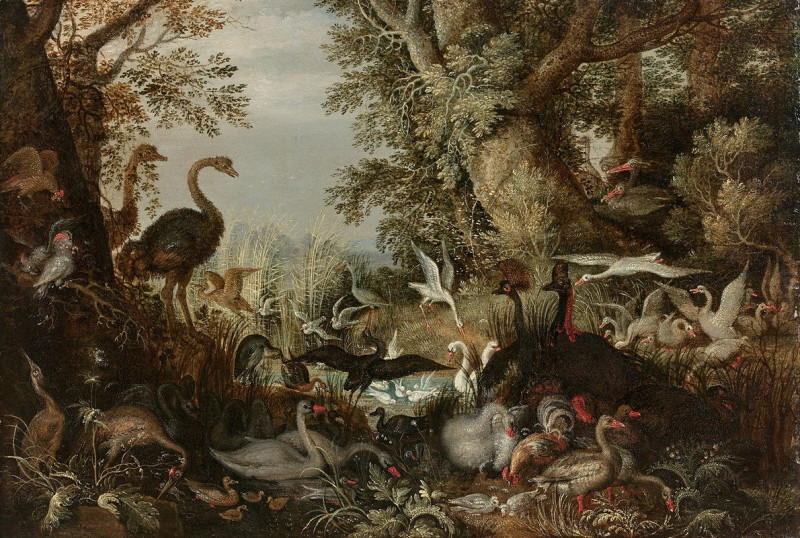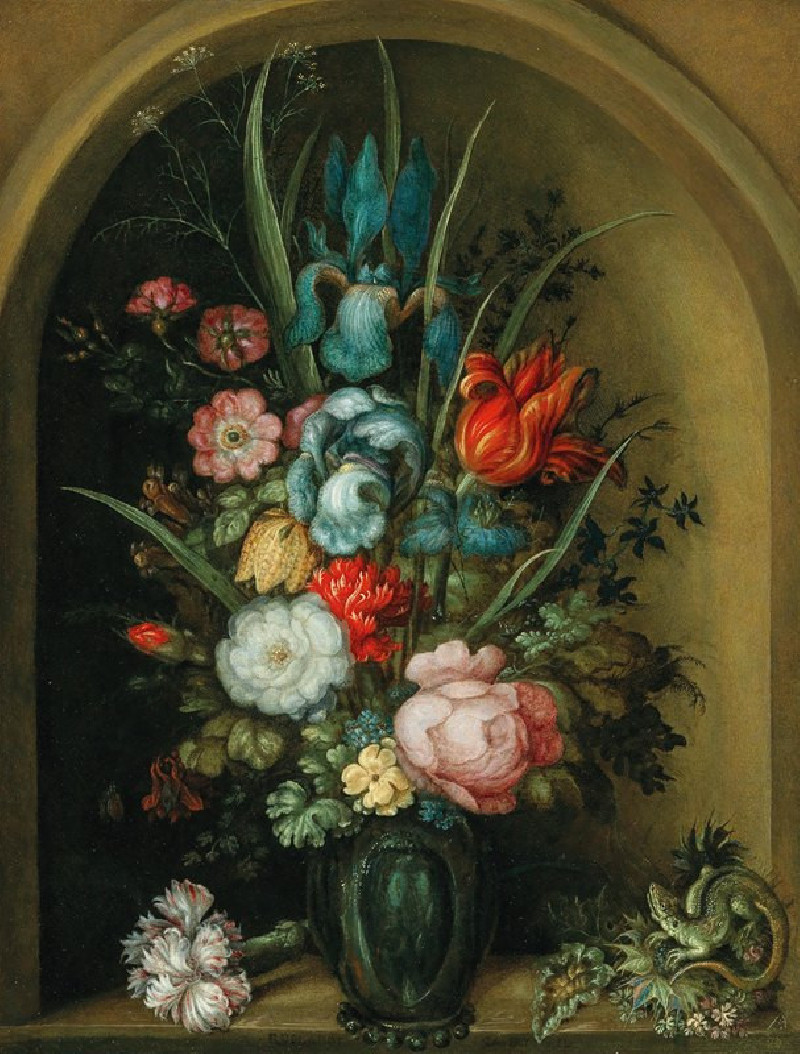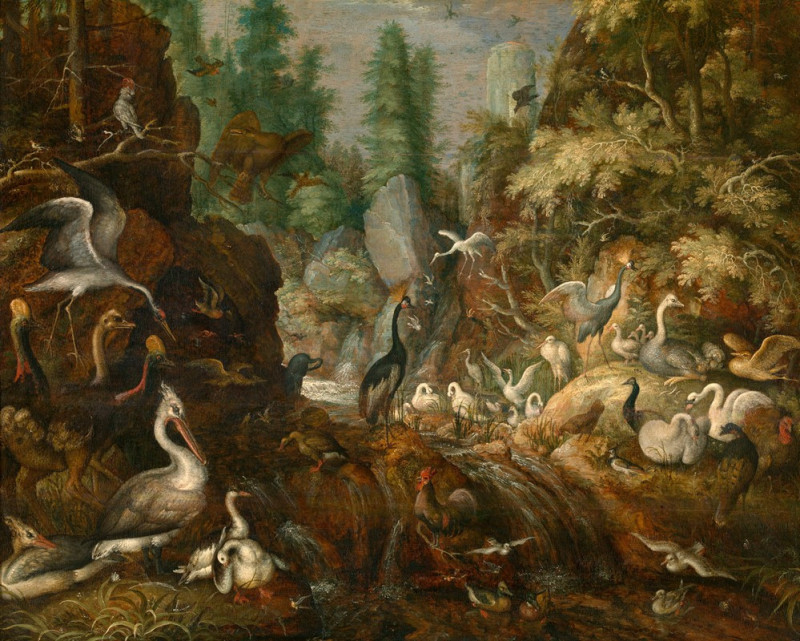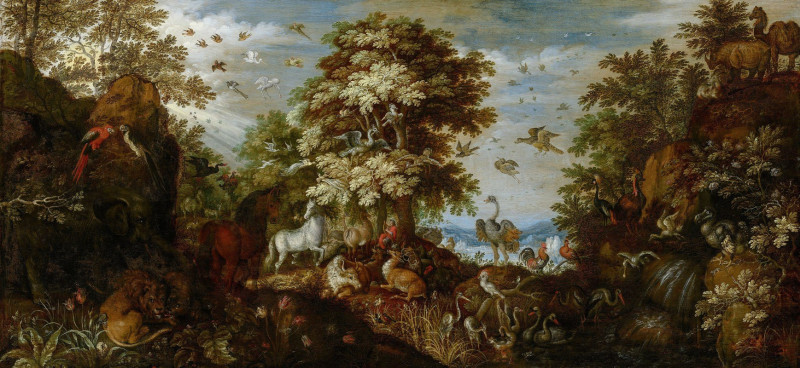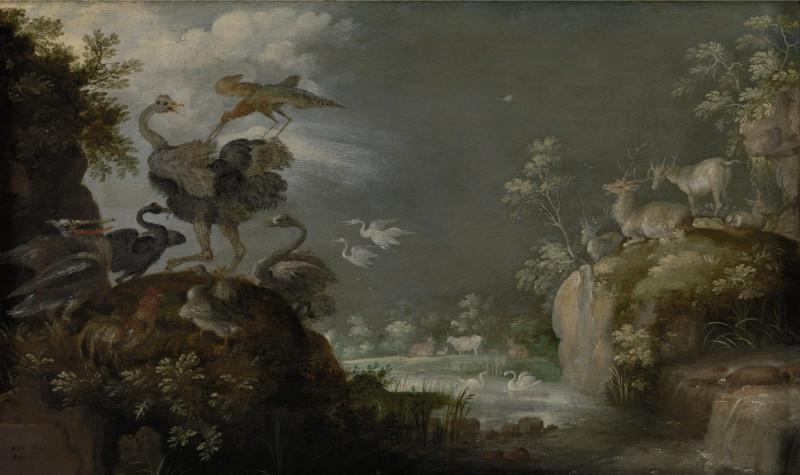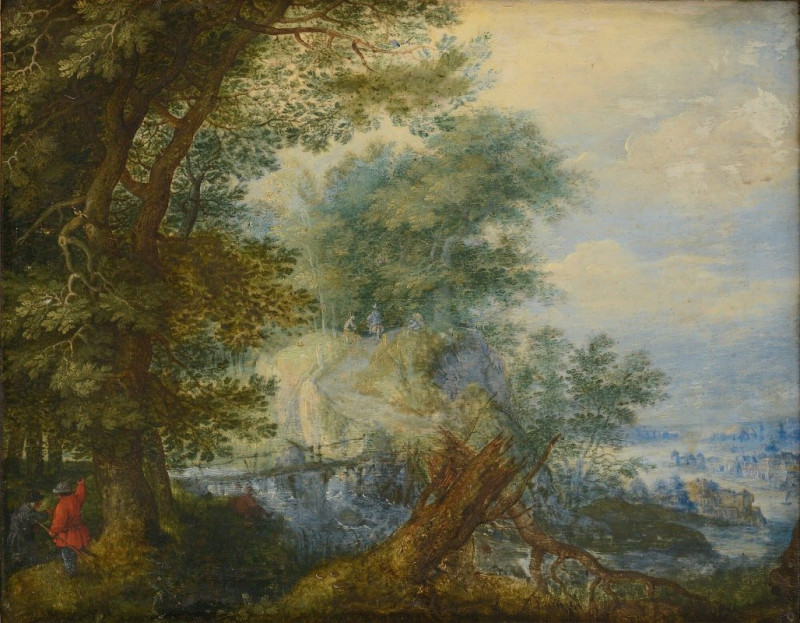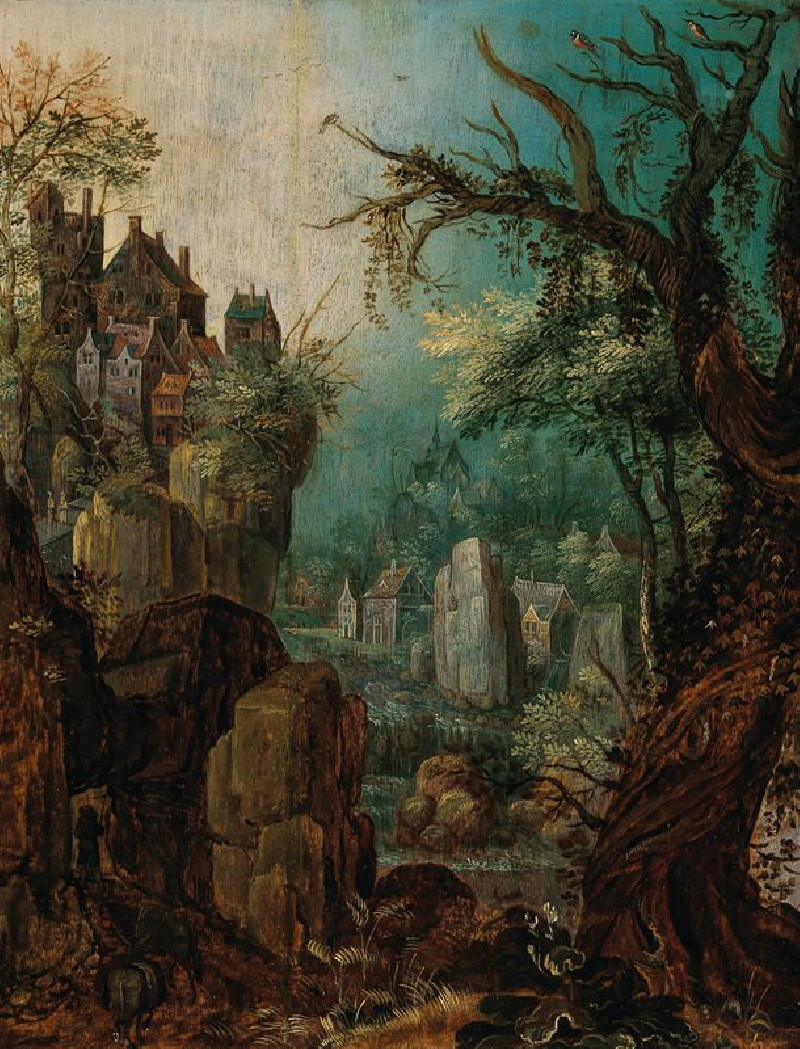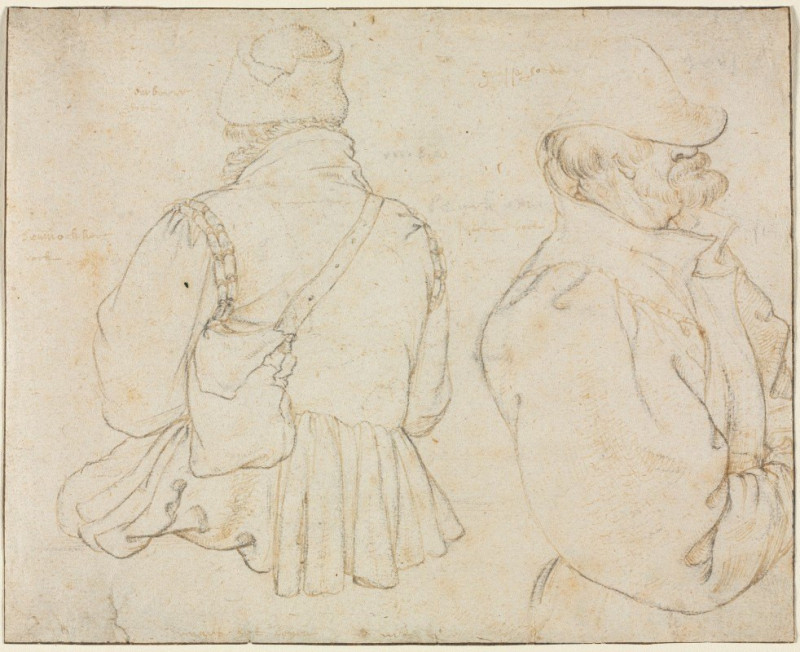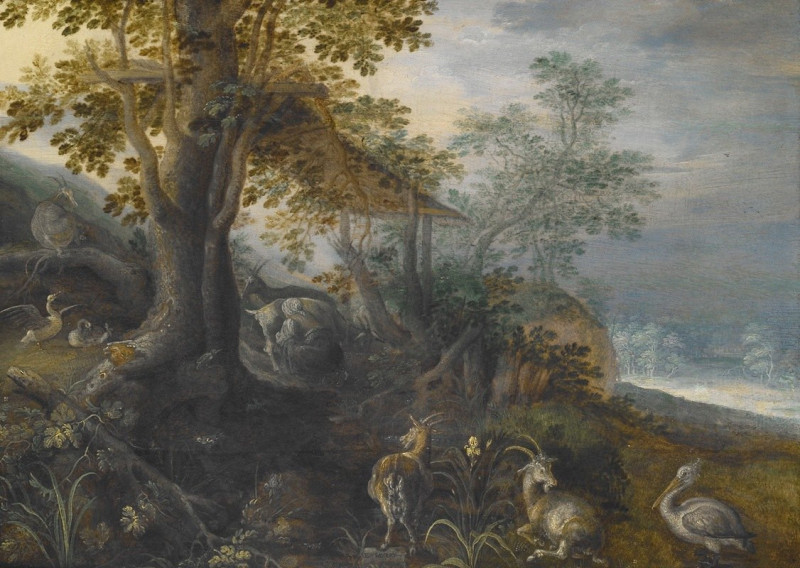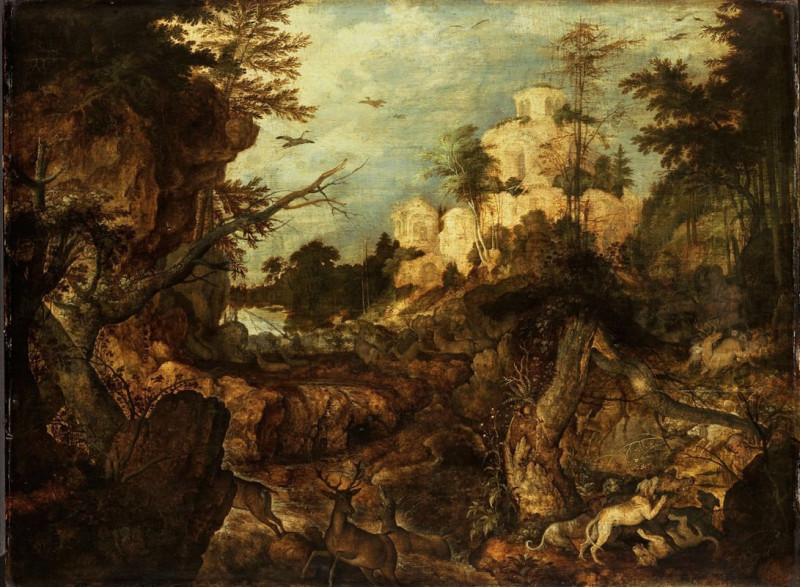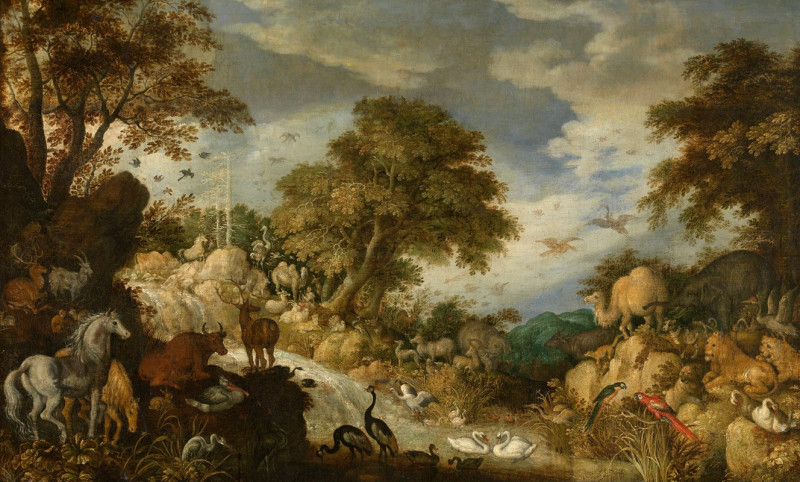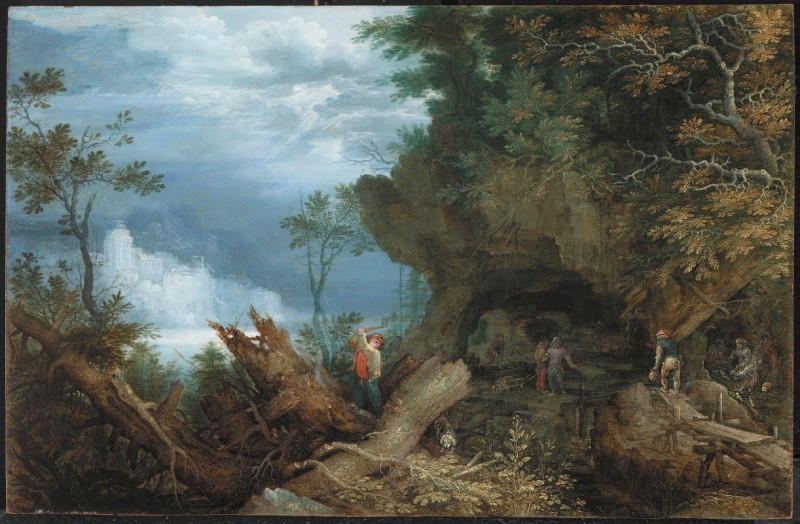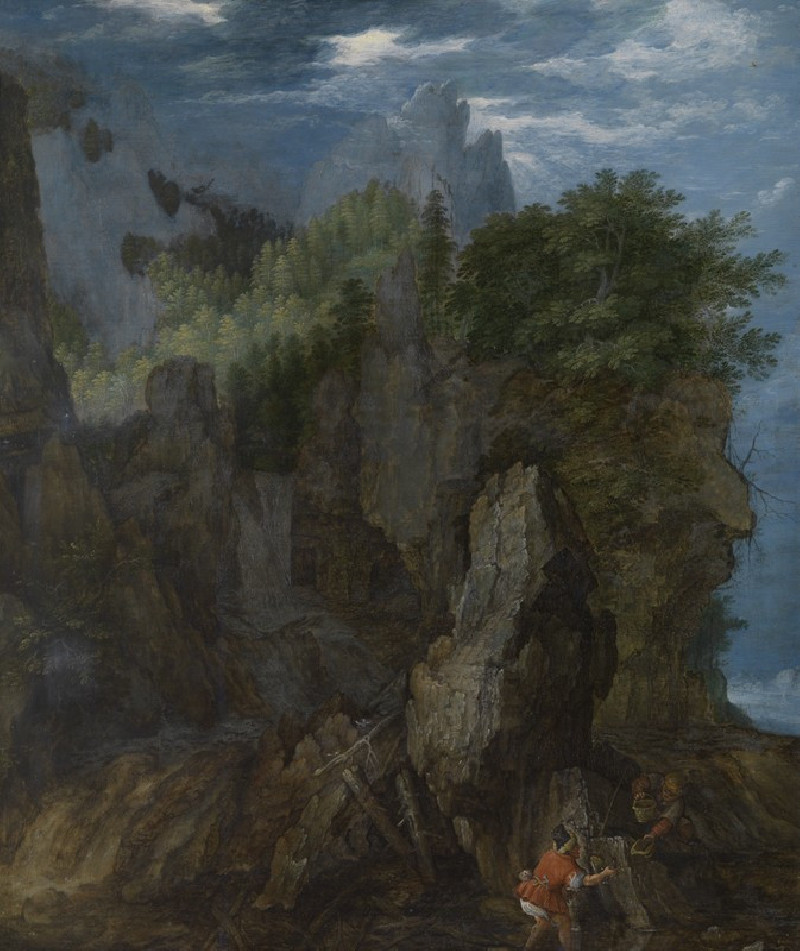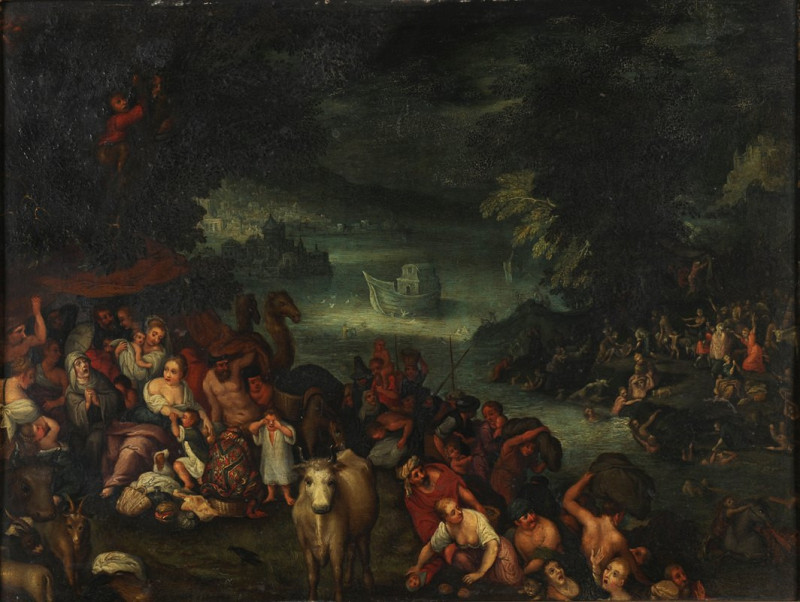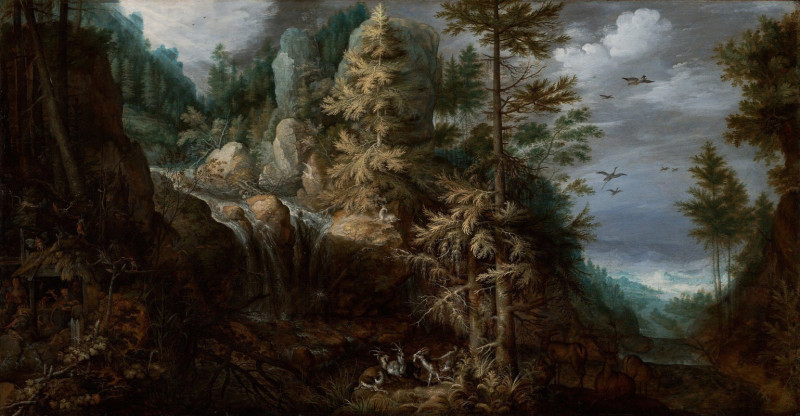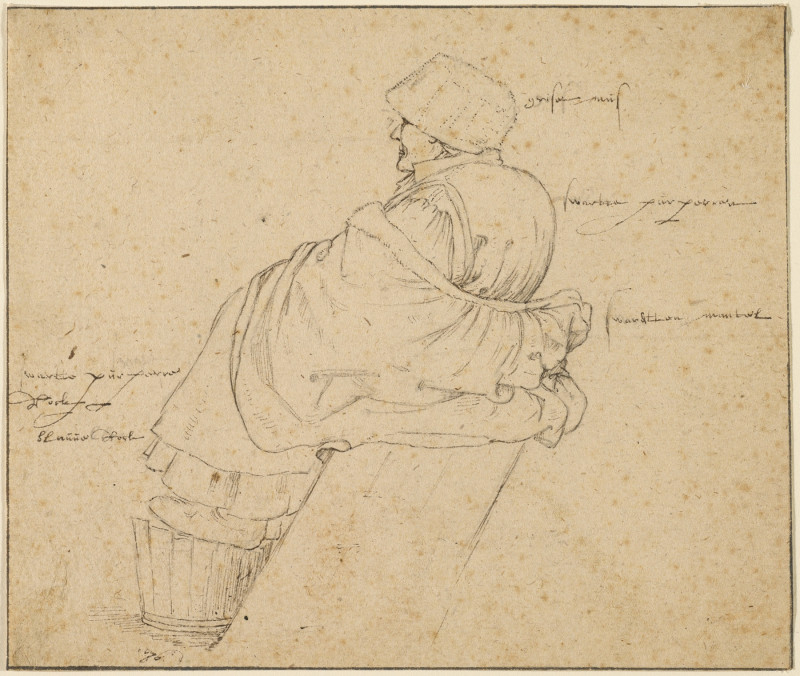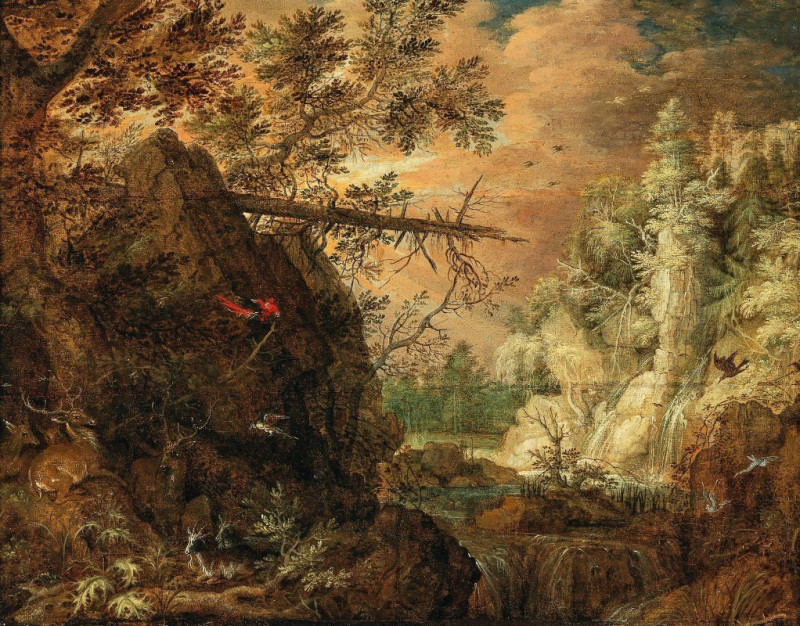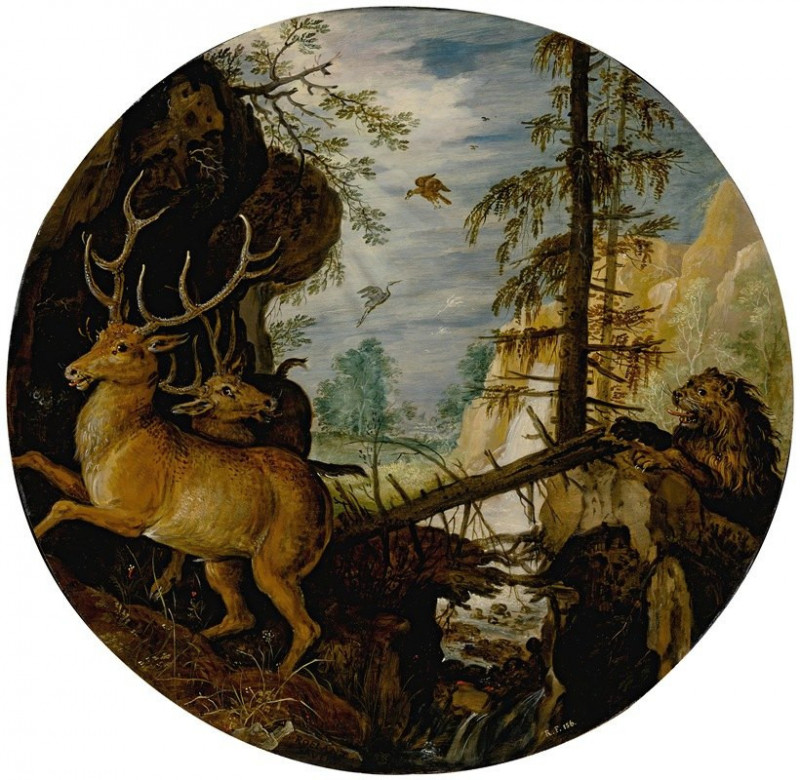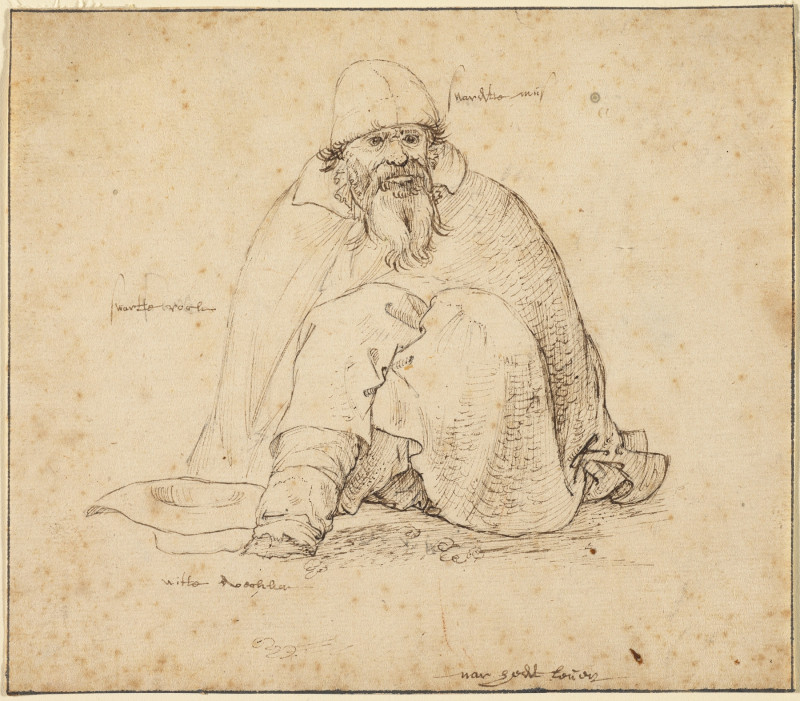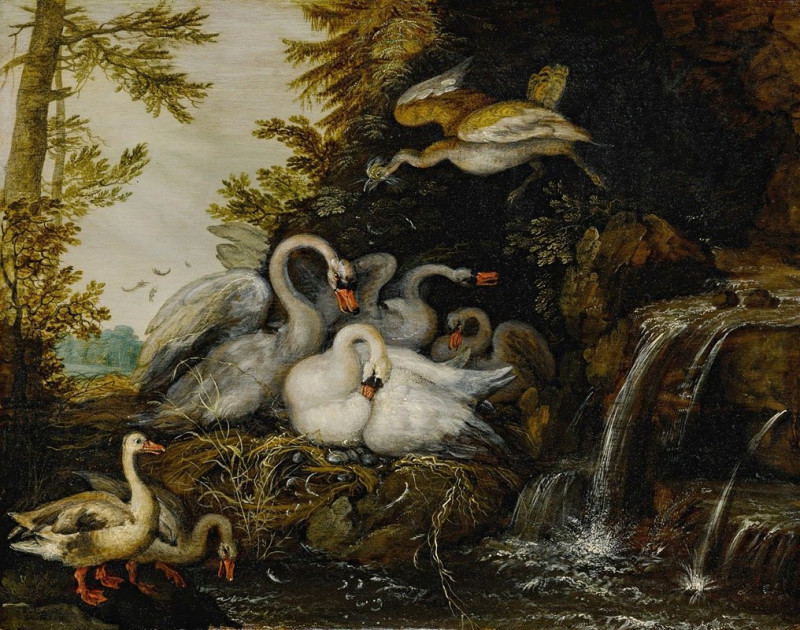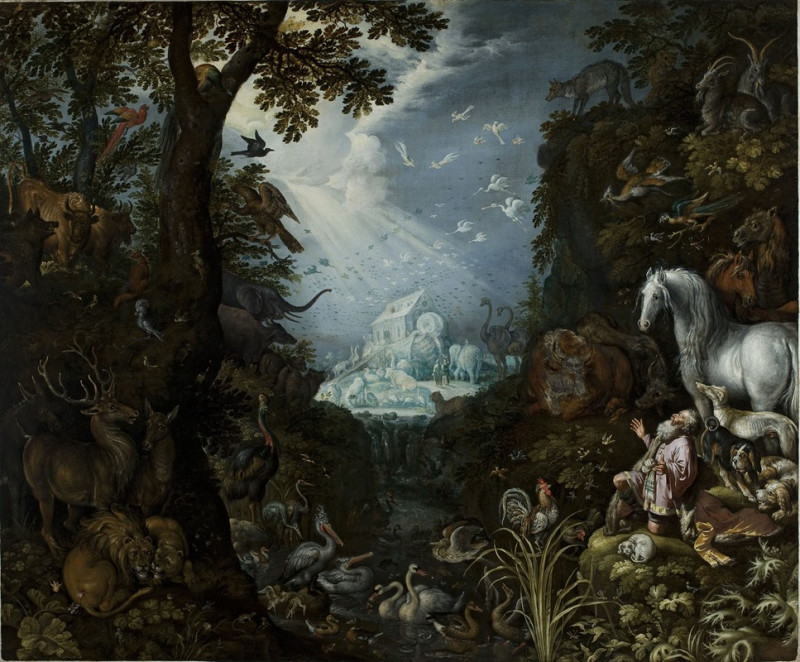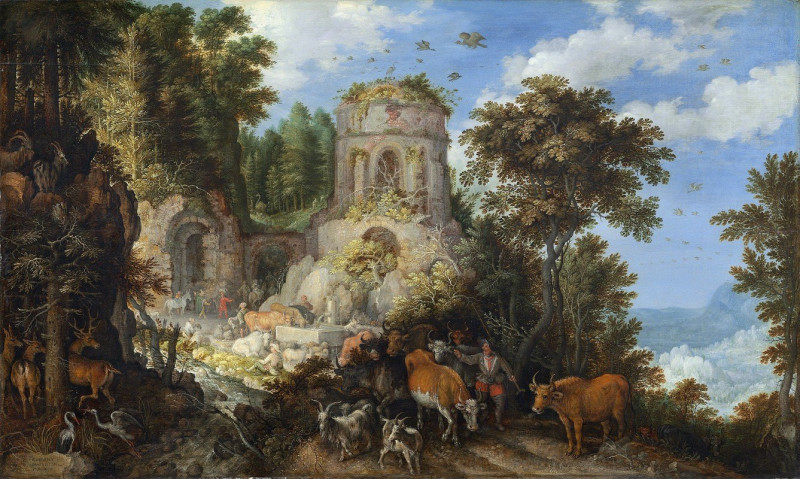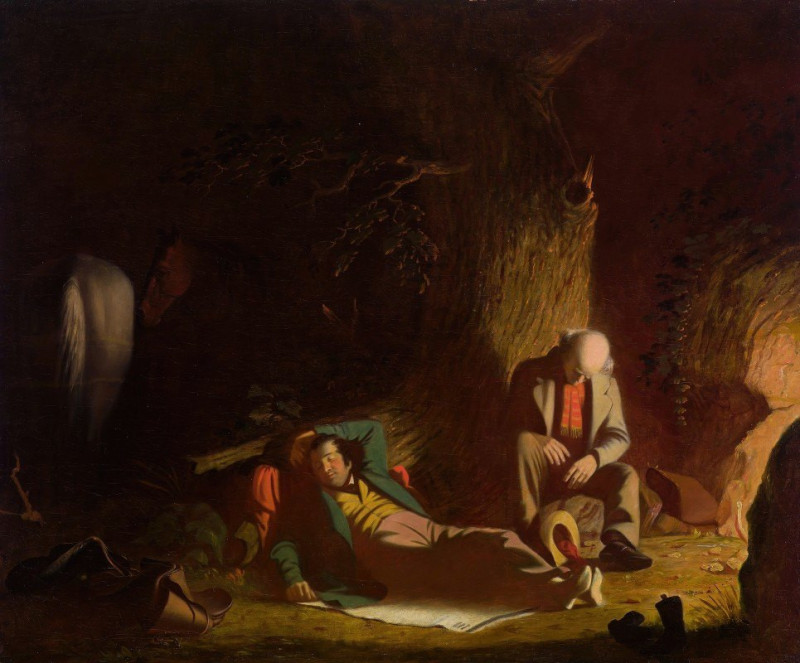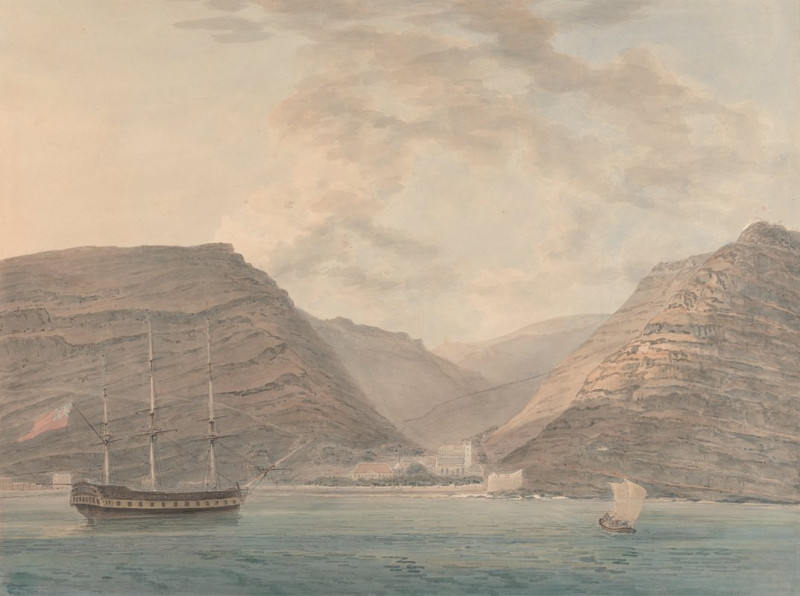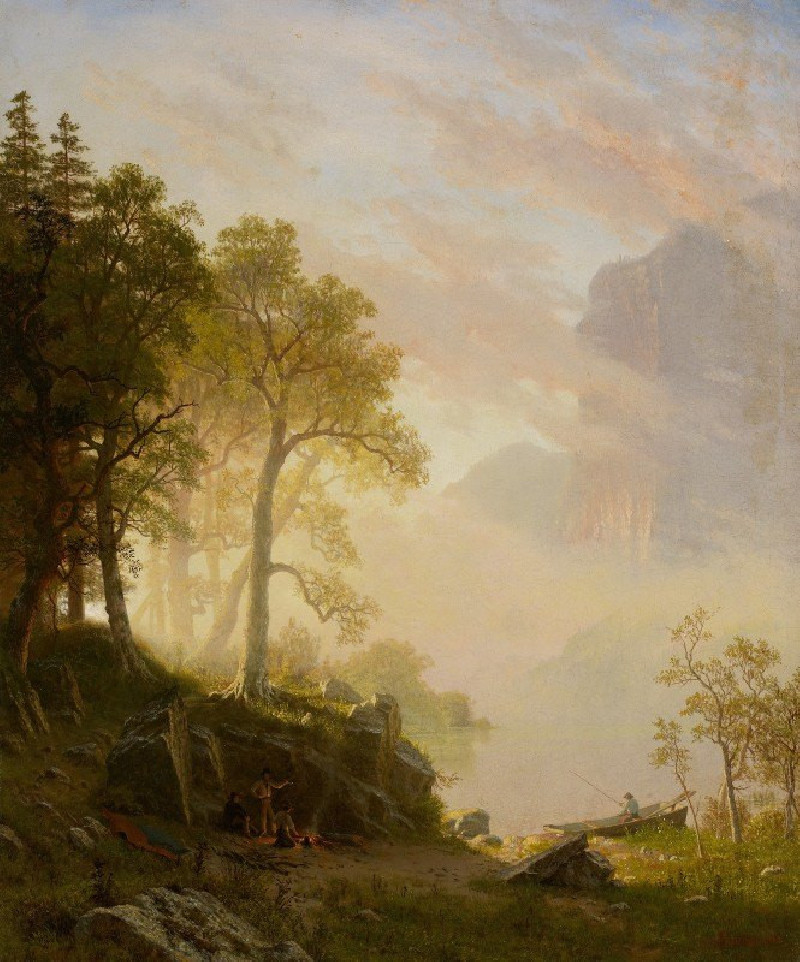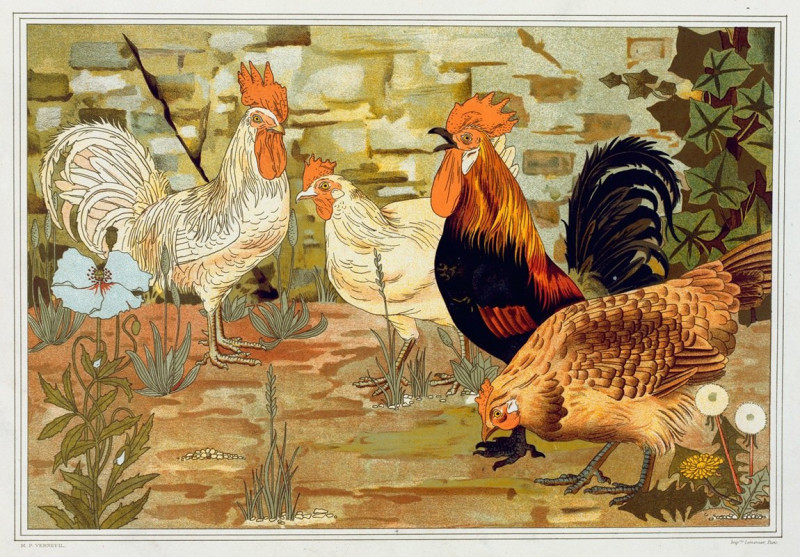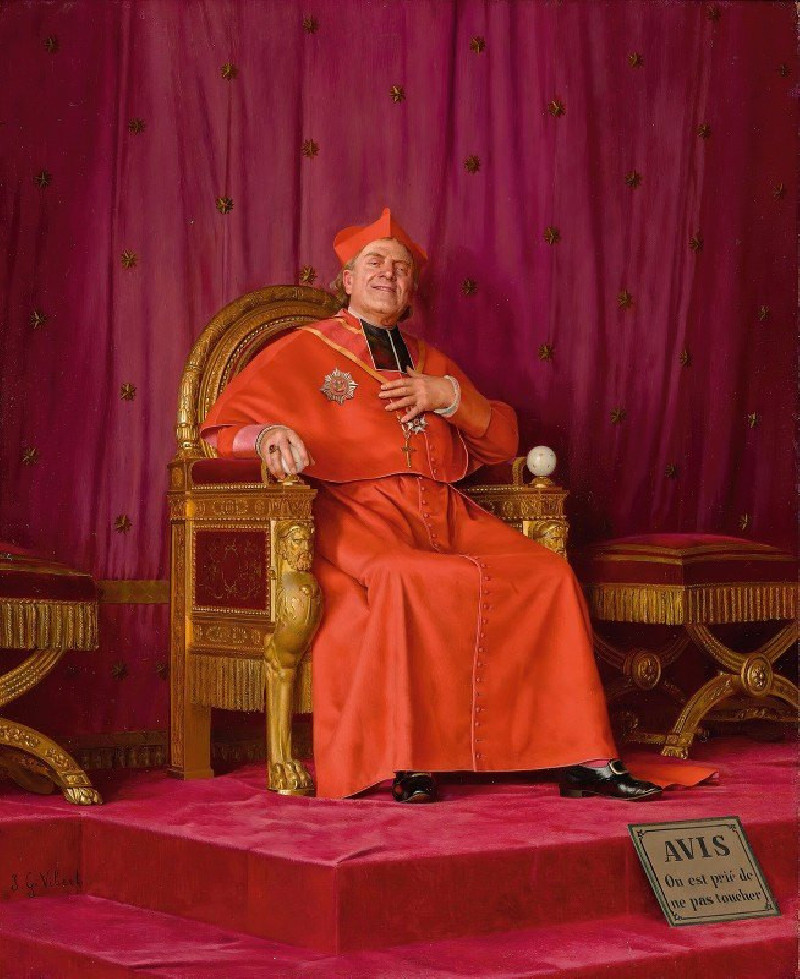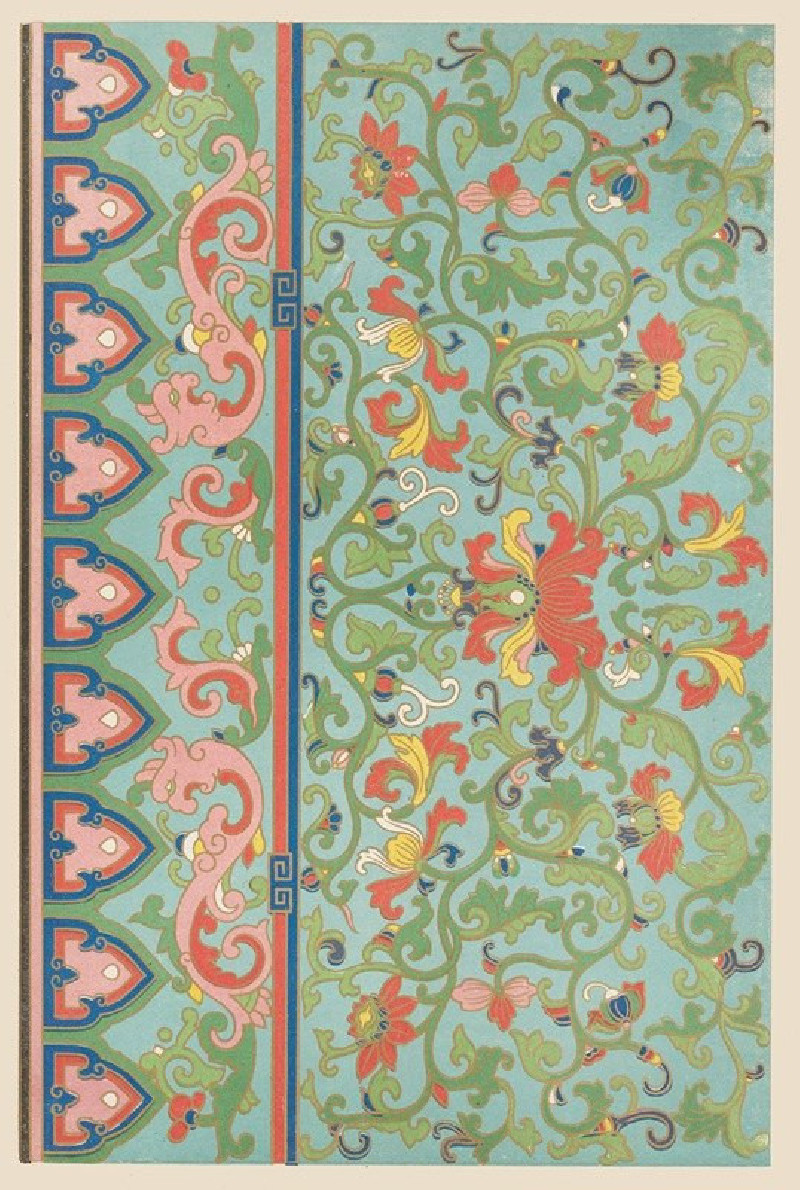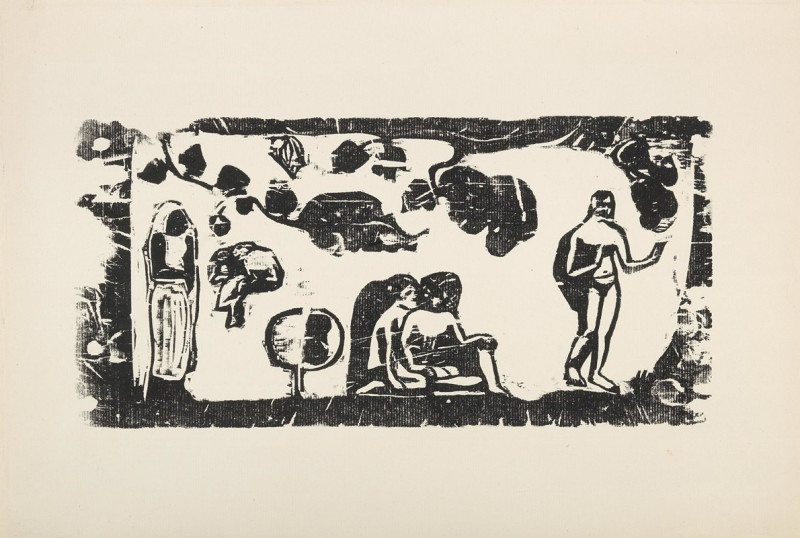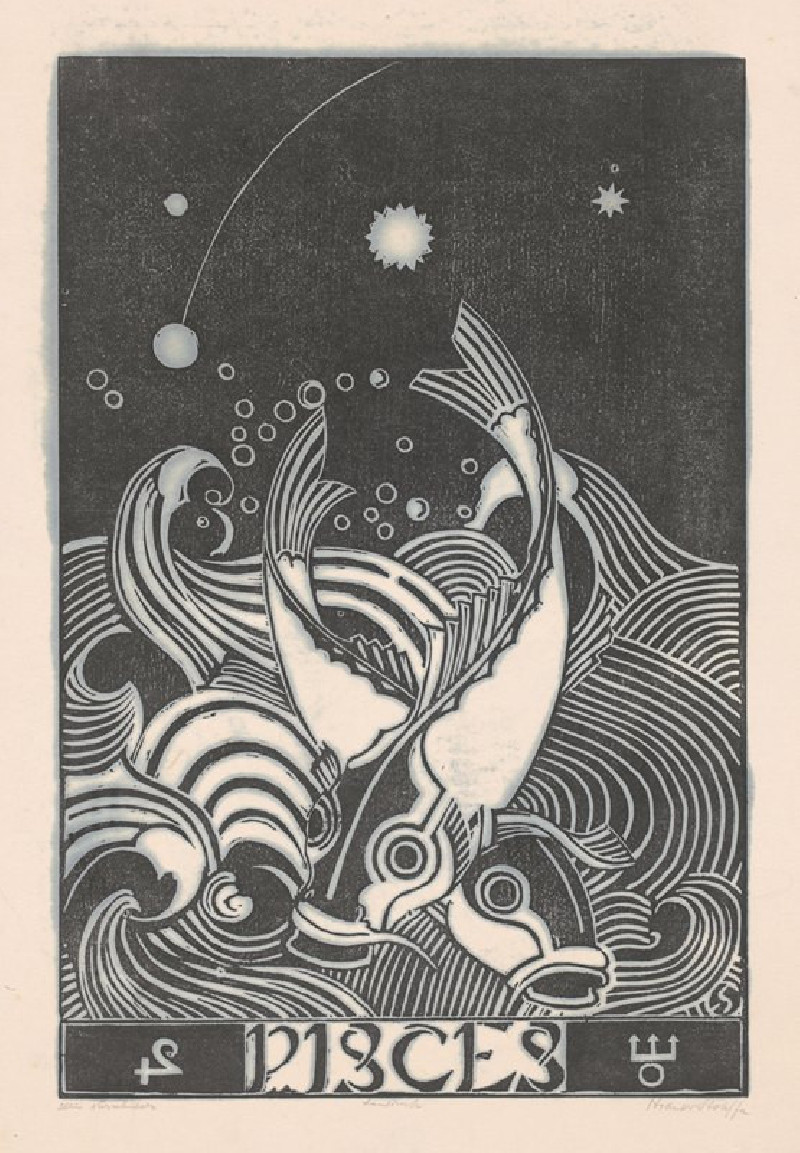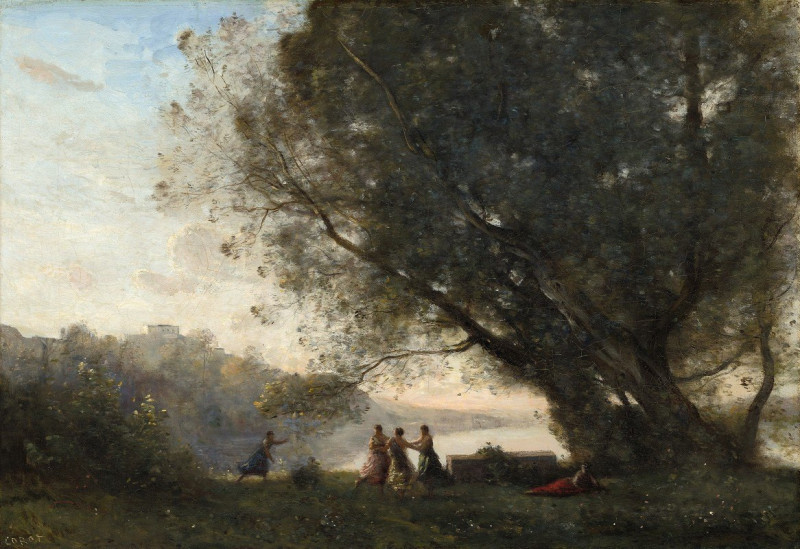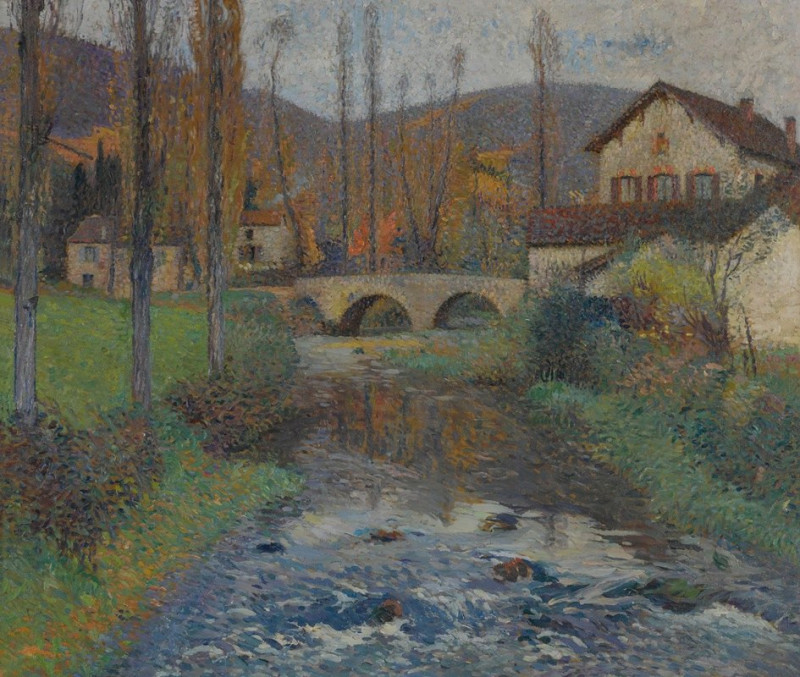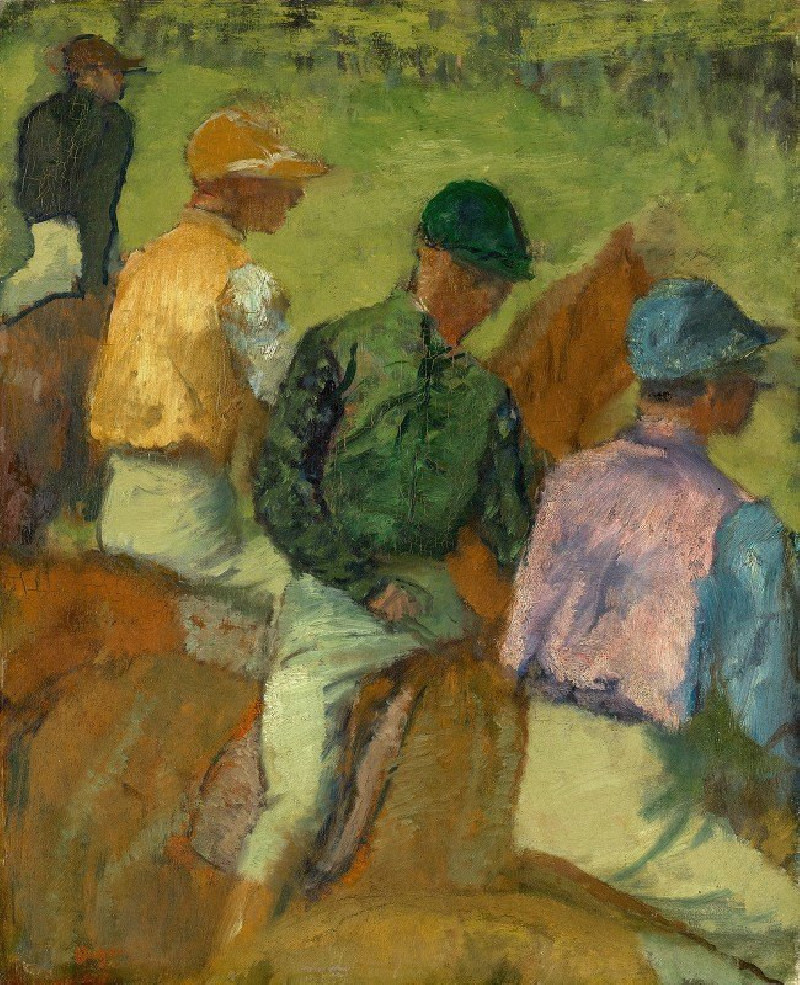Poultry (1618)
Technique: Giclée quality print
Recommended by our customers
More about this artwork
Roelant Savery's painting "Poultry" is a lush and vibrant portrayal of avian life, painted in 1618. This artwork is a fine example of Savery's skill in depicting nature and wildlife, which was highly prized during the Baroque period.In "Poultry," Savery presents a lively scene crowded with a variety of birds, creating a tapestry of motion and color. The painting is set in a dense, verdant forest, where various species of birds, both domestic and exotic, appear. At the forefront, several elegant swans are depicted, along with a regal peacock showcasing its spectacular tail. Numerous other birds, including ducks, cranes, and even an ostrich, populate the scene, some wading through the water while others perch on branches or fly through the air.Savery’s meticulous attention to detail shines in the individual rendering of each bird, capturing their distinct textures and colors. The background features a glimpse of a serene blue sky and distant waters, providing a sense of depth and vastness to the composition.The painting not only reflects Savery's mastery over intricate detail but also his deep appreciation for the natural world. "Poultry" captures the fascination of the era with collecting and studying exotic wildlife, which was often seen as both a scientific pursuit and a display of prestige. This piece serves as a stunning visual record of the biodiversity observed and admired by art patrons of the 17th century.
Delivery
Returns
Roelant Savery (or Roeland(t) Maertensz Saverij, or de Savery, or many variants) was a Flanders-born Dutch Golden Age painter.
Savery was born in Kortrijk. Like so many other artists, he belonged to an Anabaptist family that fled north from the Spanish-occupied Southern Netherlands when Roelant was about 4 years old and settled in Haarlem around 1585. He was taught painting by his older brother Jacob Savery (c. 1565 – 1603) and Hans Bol.
